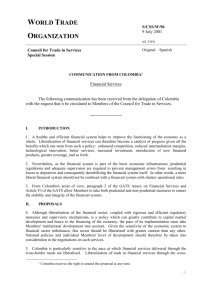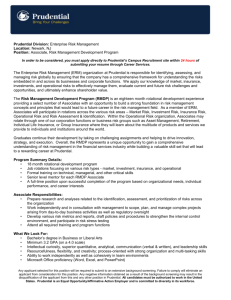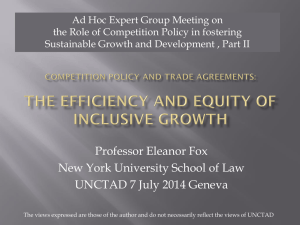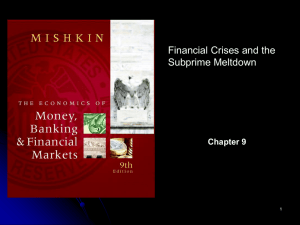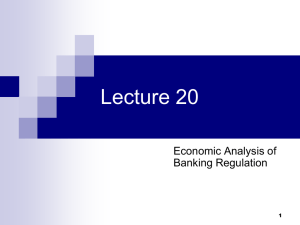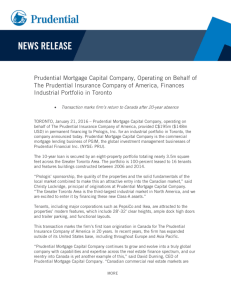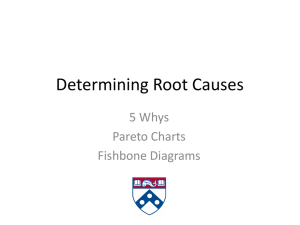Are Capital Requirements Enough?
advertisement
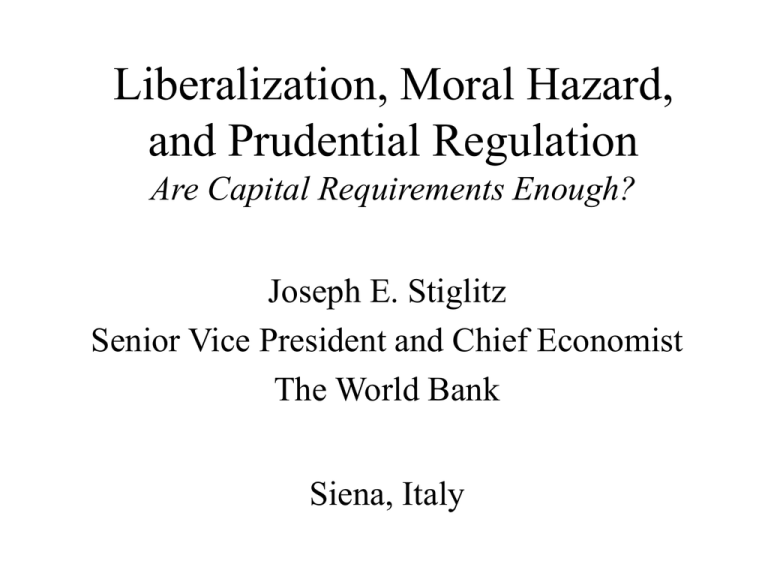
Liberalization, Moral Hazard, and Prudential Regulation Are Capital Requirements Enough? Joseph E. Stiglitz Senior Vice President and Chief Economist The World Bank Siena, Italy Why Prudential Regulation ? • Banking crises are common and costly – Over 80 crises episodes in last two decades – Costs range up to 40% of GDP • Prudential regulation is specifically designed to prevent such crises Prudential Regulation Methods • • • • • Monitoring of individual transactions Regulations concerning self-dealing Capital requirements Entry restrictions In some countries, interest rate restrictions Recent Changes in Prudential Regulation Systems •Financial liberalization •Interest rate deregulation •Asset regulation lifted •Basle Accord •Greater emphasis on capital requirements •Greater emphasis on risk management systems •Less monitoring of individual transactions Theoretical Links between Liberalization and Greater Frequency of Crises • Liberalization increases competition • Competition erodes profits • Lower profits=> lower franchise value => lower incentives for making good loans • Increased incentive to gamble. Moral hazard problem thus exacerbated. Do Capital Requirements Offset Adverse Effects of Liberalization? • If banks hold sufficient capital, adverse consequences of gambling internalized • Moral hazard is mitigated, but banks forced to hold inefficiently high amount of capital Pareto Efficiency Impossible With Only Capital Requirements • Along Pareto frontier, all competitors are efficient and total profit earned identical • But offering higher rates captures additional deposits • Higher rates possible only by gambling on higher margin of profit • Thus, market stealing effect =>incentive to deviate from Pareto equilibrium Pareto Efficient Outcomes Achieved By Both Deposit Rate Control And Capital Requirements • Deposit rate ceilings preclude banks from competing through inefficiently high deposit rates • Deposit rate ceilings increase franchise value and sustain prudent bank behavior Other Instruments May Also Improve Prudential Regulation • Asset class restrictions • Entry restrictions • Direct supervision enhancement Conclusion • Liberalization increases likelihood of crises and increases moral hazard • Capital requirements alone do not mitigate adverse consequences • Capital requirements and deposit rate ceiling combination can achieve Pareto efficient outcome.
